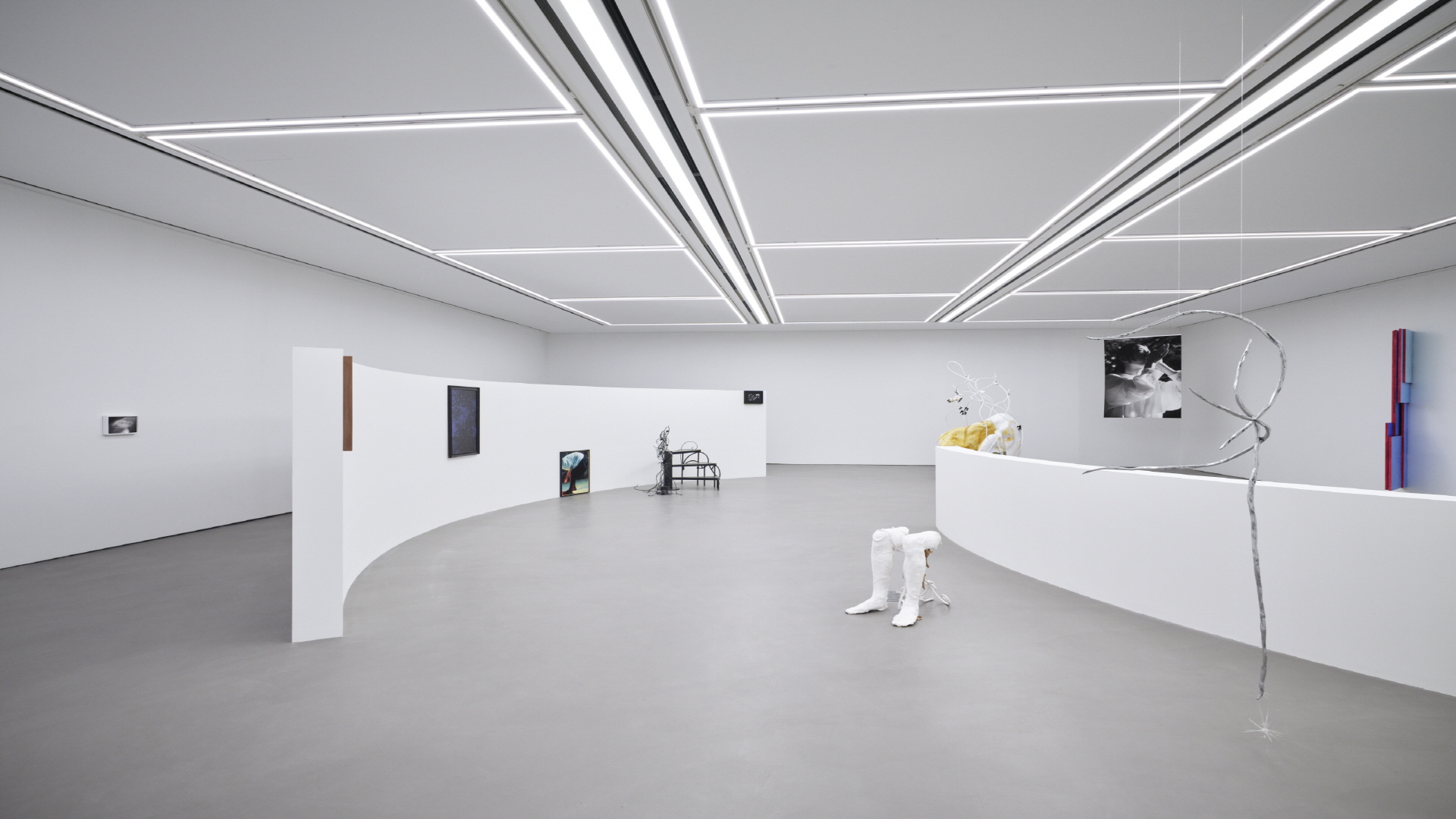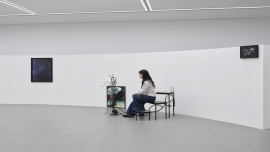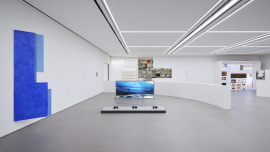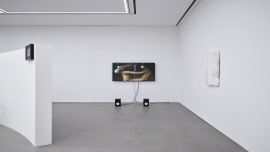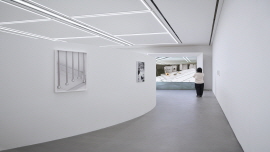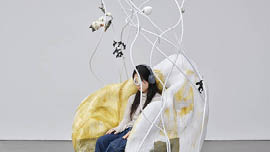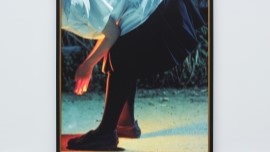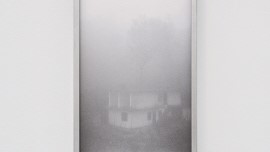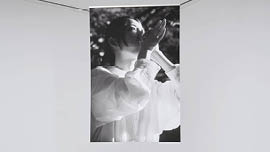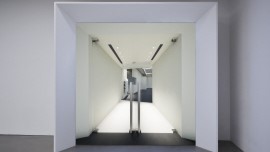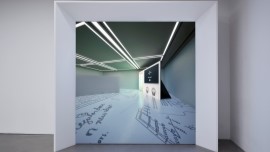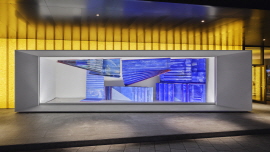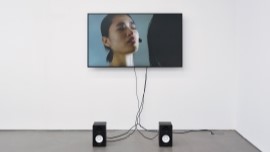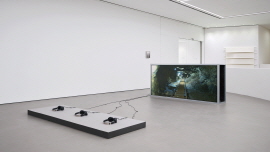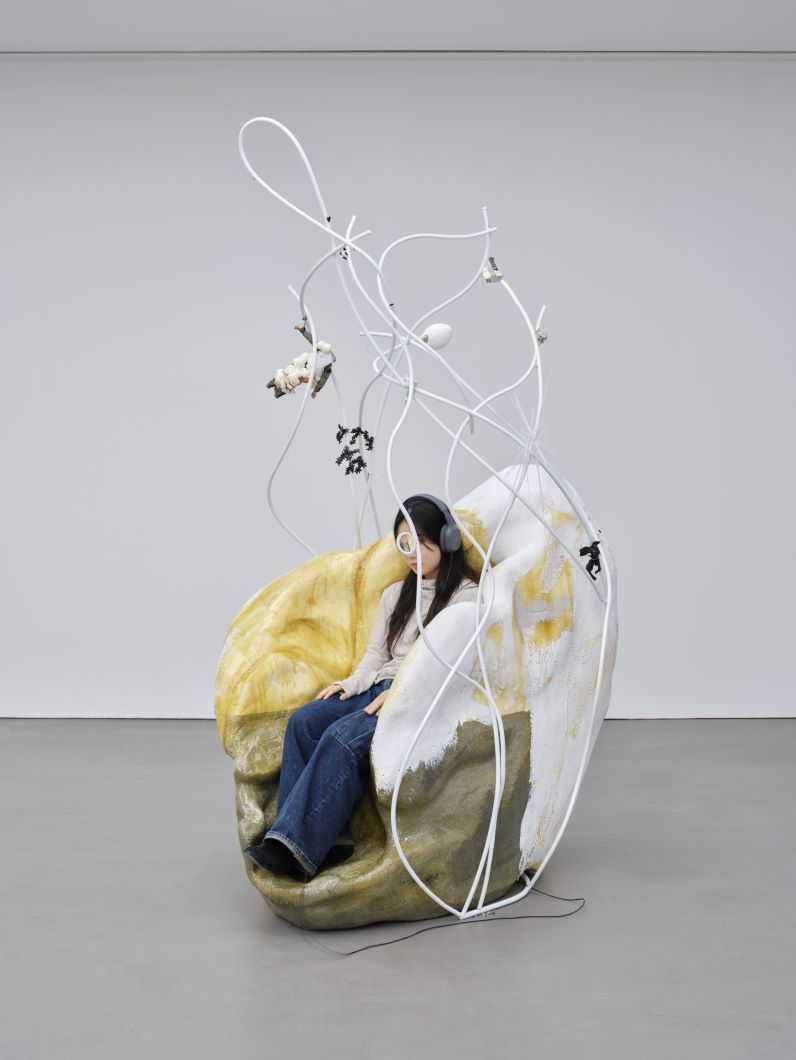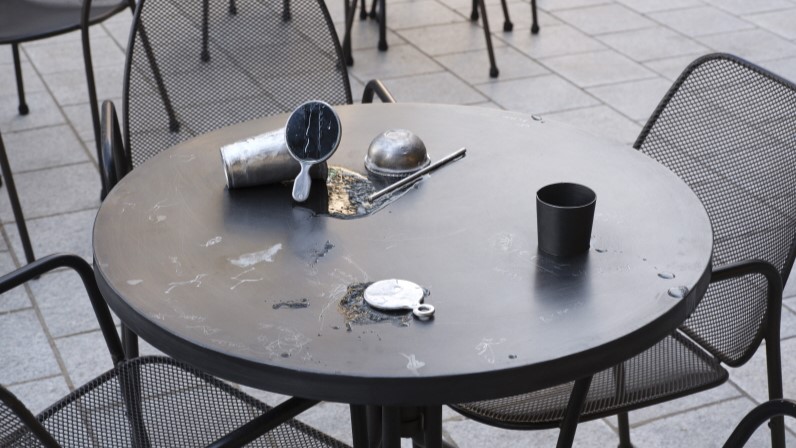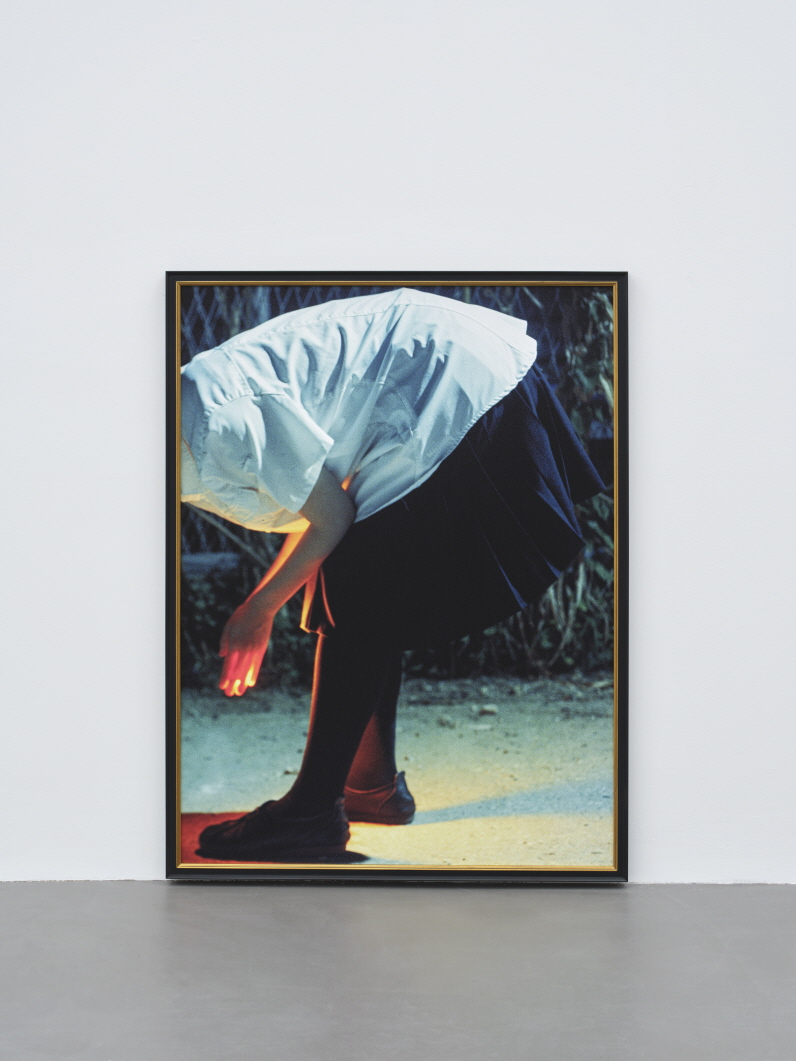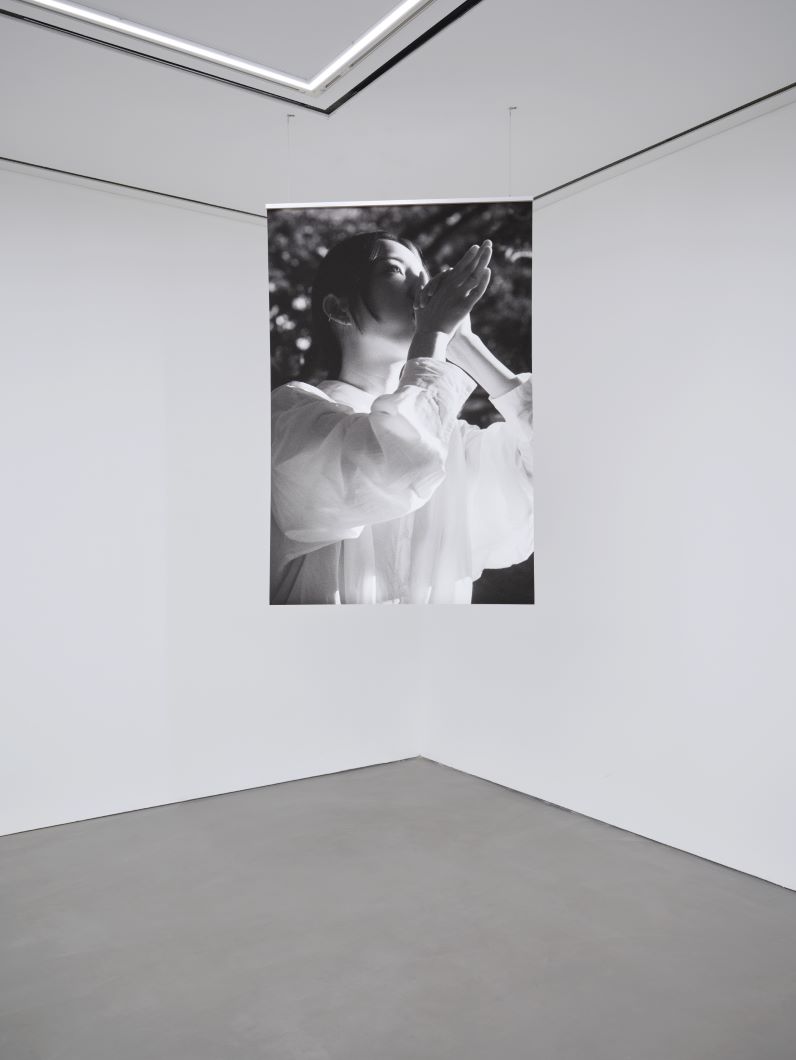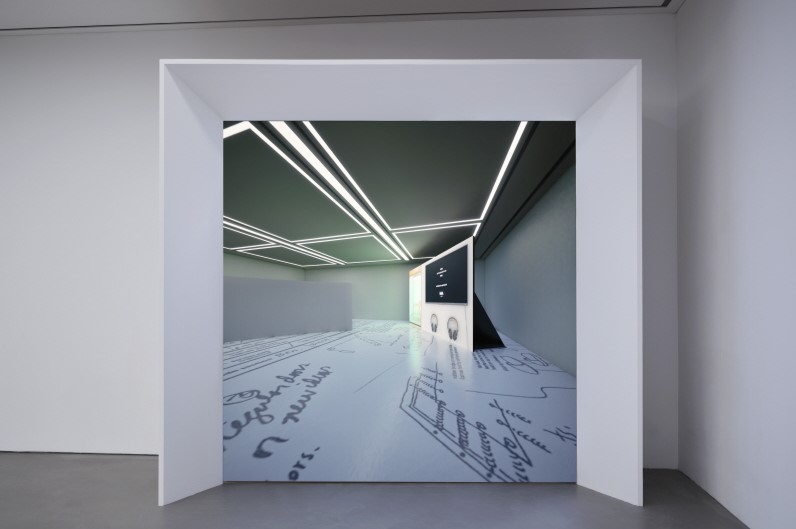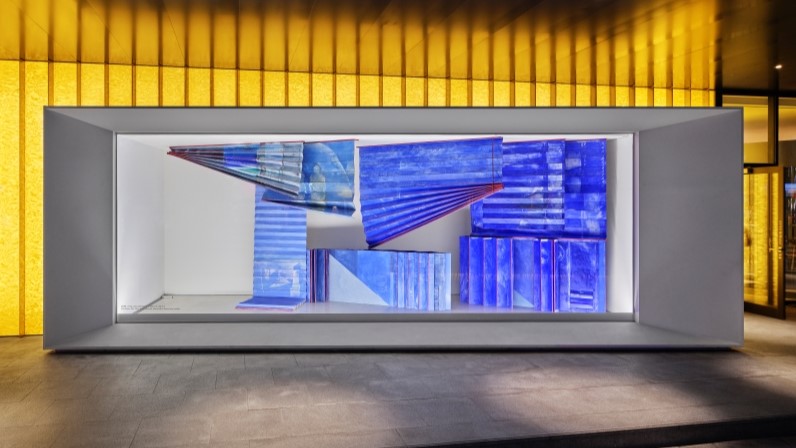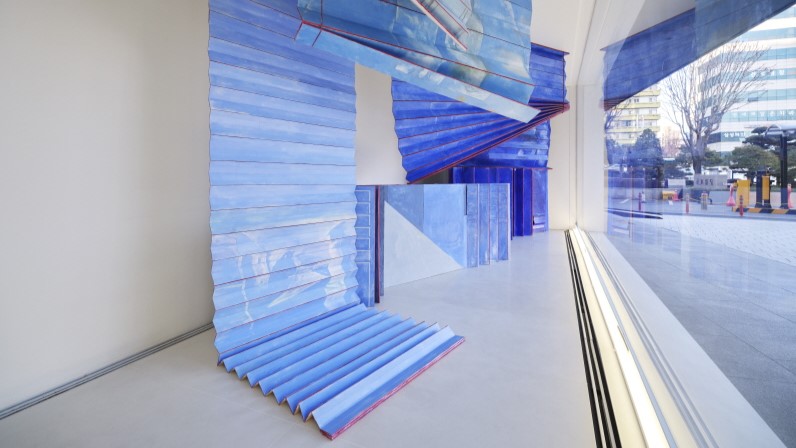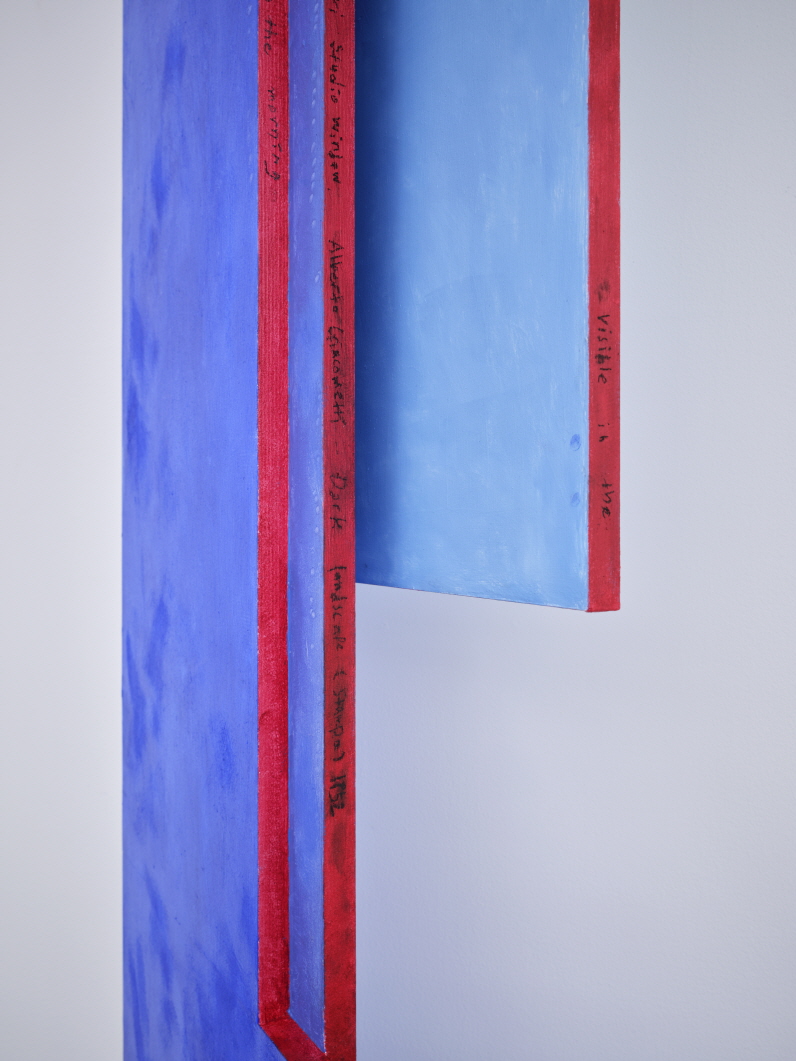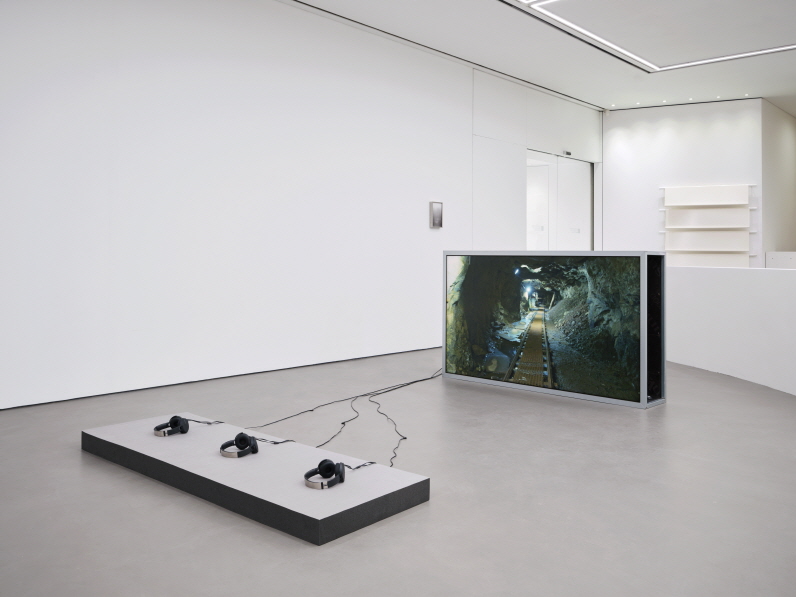- ProgramDOOSAN Art LAB
- Artist goyoson Yuja Kim Songhee Noh Jang Daeun Chang Younghae

Installation view
Photo by Euirock Lee
Tuesday-Saturday 11:00~19:00 / Closed on Sunday, Monday
DOOSAN Gallery: 15, Jongno 33-gil, Jongno-gu, Seoul, Korea
Tel. 02-708-5050
The DOOSAN ART LAB program has been run by DOOSAN Art Center since 2010 as a way of discovering and supporting young practitioners of the visual and performing arts. Each year, five visual artists aged 35 and under are selected on a competitive basis to have their work shown at a group exhibition. The artists taking part in DOOSAN ART LAB Exhibition 2025 are goyoson, Yuja Kim, Songhee Noh, Jang Daeun, and Chang Younghae.
Each of the five artists whose work is gathered here adopts a different approach and attitude to contemplate the distance between themselves and the outside world. The “exterior” that they focus on may be a story about the lives of others or about different times and places; it may concern presences and phenomena beyond perceptions, or it may be the immediate reality surrounding them. Goyoson, Yuja Kim, Songhee Noh, Jang Daeun, and Chang Younghae keenly perceive the distance between themselves and what lies outside them, as they focus their questions on that gap. They may work actively to bridge the divide, discover new things within it, or incorporate the unbridged gap itself into their work.
For goyoson, sculpture is a way of forming relationships with the world that surrounds him. Understanding his medium in terms of its interactions with surrounding presences, he creates work that actively incorporates the changes that arise in the process. He embraces every kind of condition that introduces variable possibility into sculpture—not only deliberate acts but also elements that arise and accumulate naturally as time flows within spaces, including warmth, marks, and weights. To this end, he makes use of a broad range of materials beyond traditional ones such as plaster and metal, seeking to capture evidence of change through the use of Styrofoam, urethane, clay, shaving foam, feathers, and more. With this exhibition, goyoson deliberately rejects the notion of sculpture as a completed object in itself, focusing instead on the relationships through which it can branch out and expand in new ways. Jeon Minchul, Cold wind and Bonfire (2025), a collaboration with the ballerino Jeon Mincheol, transmutes the rapport between the two into warmth that can be sensed in the viewer’s fingertips. Lullaby-Singing Sculpture (2025) incorporates miniature versions of works by the other artists appearing in this exhibition as it expresses the wish for someone to go to sleep. The sense of this work is completed through the viewer’s experience.
As an artist working across multiple media, Chang Younghae shares a multifaceted exploration of the physical properties and positions of the changing body when it is filtered through social rules, technological environments, and media. In her previous work, Chang used pole dancing and pair skating-based performances to observe and reconfigure particular behavioral patterns of the body that are created by rules regarding sexuality. In her recent performance works Black Maria (2023) and Glove box (AlterSide, 2024), she has observed the fragmenting and objectification that occur as bodies are converted into images through cameras, X-rays, and other optical devices. In the process, she has revealed the hierarchical structures in which contemporary bodies are situated, while focusing on the affect that occurs at moments when the body’s subjectivity is lost or regained. For this exhibition, Chang examines how the vitality of the body is dulled and distorted in sensory terms in a contemporary society dominated by advanced media and technology. In the video annie, cobalt (2025), as she looks at how warfare has been consumed as spectacle in the media environment and massacre sites have been covered up with golf courses, she illustrates mechanisms in which violence goes beyond the realm of an extraordinary shock to pervade familiar environments. In blur, blur (2025), she delves into AI technology’s attempts to represent distinct human emotions and gestures in its pursuit of average-based perfection. In the process, she explores the contemporary “body horror” that technology has wrought.
Yuja Kim uses the medium of photography to pose questions about what is seen and unseen. Her work focuses on subjects lost due to film damage, the marks left on the body by sleeping, and unclearly detected moments such as those associated with figures who are stopping or trembling. While her photograph may seem to show a fixed scene, a closer look shows the subtle movements and vibrancy that pervade the image. What the viewer perceives may be the moment of a figure holding or expelling breath, sounds of movement detected in stillness, or a tension suggesting a kind of transformation. Increasingly, these perceptions became as clear as something “seen.” Through these moments in which visual experience transforms and expands into different perceptions, Kim explores the possibility for the photography medium to capture polyphonic perceptions. Her investigations are heightened through variations in the materiality of paper and frames and through installation methods that respond to environments. For this exhibition, her works are positioned throughout the space to create a fluid, temporary “square” setting, encouraging viewers to imagine and await something lost in the past or something expected to newly arrive.
Songhee Noh makes use of tangible and intangible archives and exhibition spaces as her materials, producing videos that usher them to a meta level. Beyond her close examinations of the essence of materials, Noh imbues new tempos and structures into memory through her deconstructions of fixed scenes from existing narratives. In this video work, Best Television is Noh Television (2025), she attempts to subvert the accessibility of digital video as a medium that can be played in any setting. To this end, she posits a new relationship between the exhibition space and the virtual environment on the screen. In the video, she imagines the DOOSAN Gallery as a new virtual exhibition space for storing and displaying her past works. The video leads from the gallery entrance to the setting of a different virtual exhibition, passing by previous video works by the artist on the way—including The truth is the one that is masked (2021) and Time Shifting Box (2022)—along with archival materials from her 2024 solo exhibition Dizzy at Audio Visual Pavilion. The experience created as the real and virtual spaces interact is perceived by the viewer as a world that is heterogeneous yet integrated, posing questions about “where” they are present. As she connects physical and digital space and the past and present, Songhee Noh proposes a different approach to archival reading.
Jang Daeun investigates the concepts associated with surfaces and curtains, collecting stories of the different times and spaces that exist behind and beyond them. The repeatedly appearing curtain structures in her work are devices that create two distinct times and places. Typically manifesting in forms that can be opened and closed, they simultaneously show the artist’s sense of distance vis-à-vis the world beyond and her curiosity toward it. The folktales, children’s stories, and histories that Jang has assembled are archived and attested to in her work through an act of “drawing” that blurs the boundaries of two-dimensional art, three-dimensional art, and performance. With a repeated process of immersion into narrative and vanishing or colliding, the artist transforms the world beyond into a convertible structure that expands to become part of reality. In BILL (2024), the six wooden curtains positioned in the spaces depict narratives entangled with "s" that the artist has seen herself or collected through the perspective of another. They present scenes that exist in different times and places, such as the lit observed by the artist while lying in her bed each night or s and landscapes ed through the eyes of others in fiction and art history. As the juxtaposed curtains create a spatial sequence and layers of narrative, they flow into the work Blue Curtain (2024) in the exhibition space beyond the wall, unveiling and condensing the time within them.
Through their different ways of perceiving the “outside,” these five artists—goyoson, Yuja Kim, Songhee Noh, Jang Daeun, and Chang Younghae—capture the latent volume and content within. Just as the light reflected off an object returns to our eyes as we observe it, the act of attentively observing an “exterior” leads in turn to reflection on one’s interior. The five artists in this exhibition encourage us to detect the subtle vibrations and resonances that come from perceiving the outside world—and to look more deeply within them.
Curated by Haram Kang, Hyejung Jang │ Assisted by Seongeun Park, Yoonseo Lee

